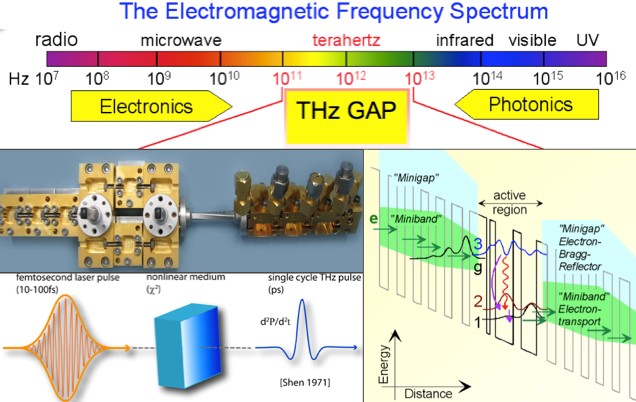Fundamental principles of THz-wave (1011-1013Hz) generation and detection methods and the numerous and ever growing THz applications
The goal of the course is to highlight the importance of the THz region of the electromagnetic spectrum and make the students familiar with numerous methods of terahertz wave generation and detection, as well as with different applications of THz technology.

Topics include:
- The concept of “terahertz gap”.
- Vacuum electronics based THz sources (Schottky diodes, RTD, IMPATT, backward-wave oscillators). Frequency multipliers.
- Synchrotron radiation sources. Free electron lasers.
- Sources based on quantum-confined structures.
- Photonic-based sources (photomixers & photo-antennas, nonlinear optical sources).
- Optically pumped THz molecular lasers.
- Superconducting THz emitters.
- THz detectors (antennas, Schottky diodes, bolometers, thermopiles, pyroelectrics, Golay cells, heterodyne and up-conversion detectors, superconducting detectors, microbolometers & focal-plane arrays).
- THz waveguides, photonic crystals & metamaterials.
- Applications including broadband time-domain THz spectroscopy, molecular sensing, THz imaging and tomography, near-field THz diagnostics, THz in biology and medicine, security and defense, and communications.
- Near-field THz effects and measurements.
- Novel THz devices.
- Producing high THz fields. Nonlinear interaction of THz waves with matter.